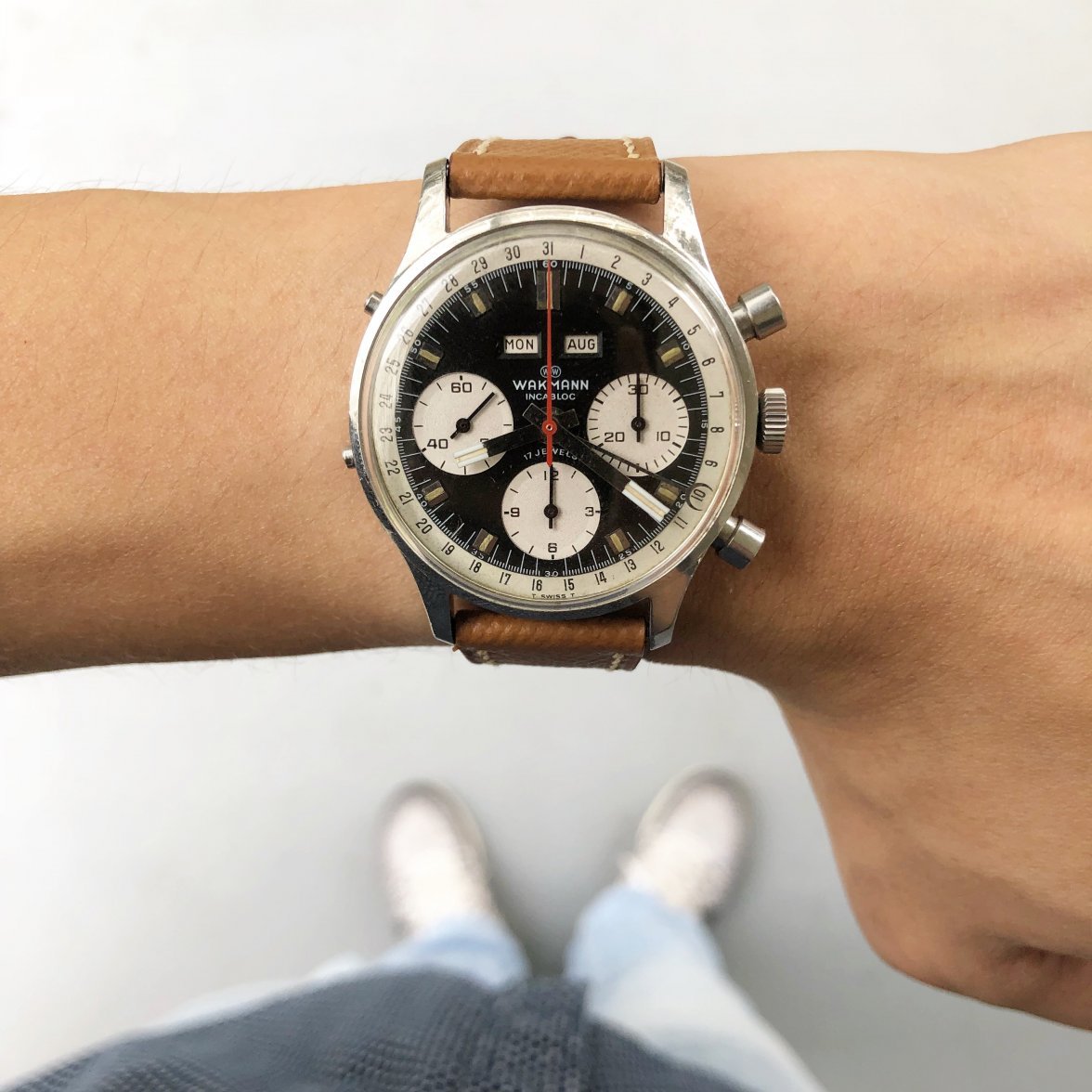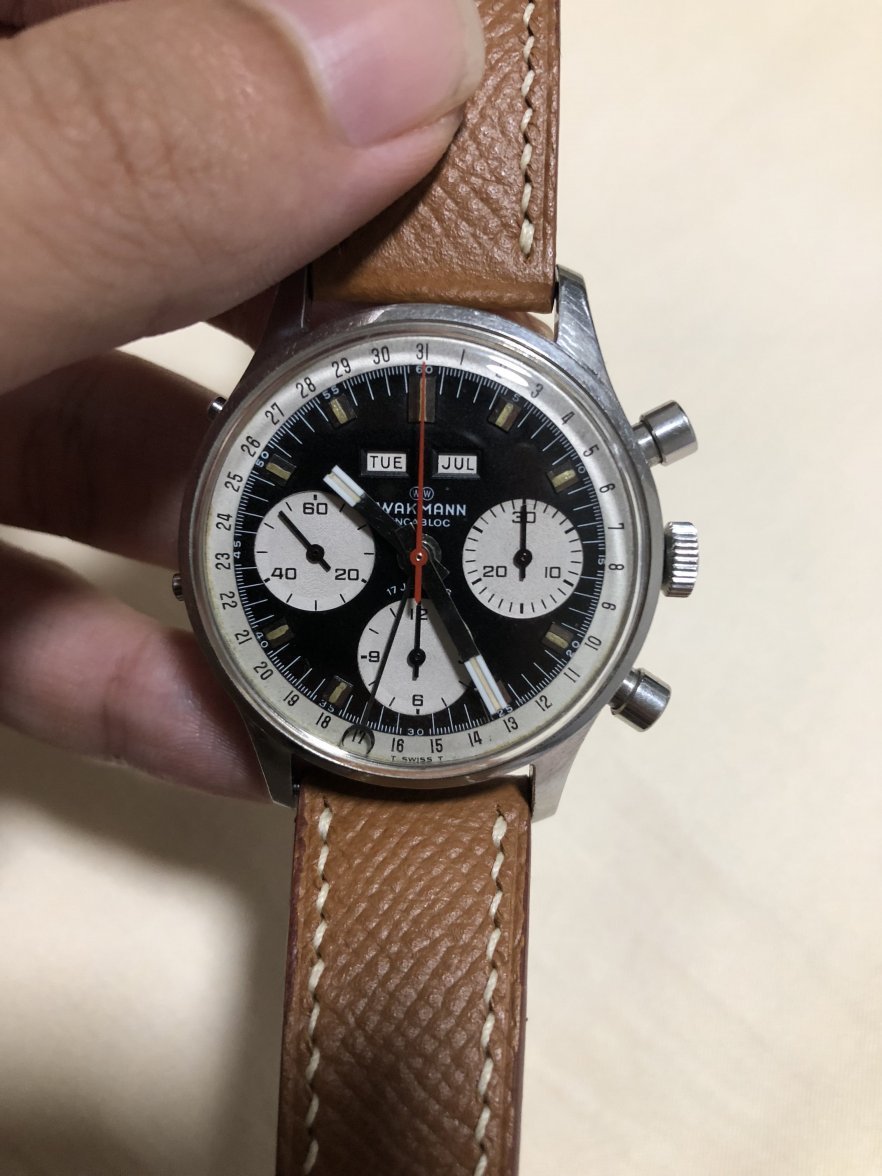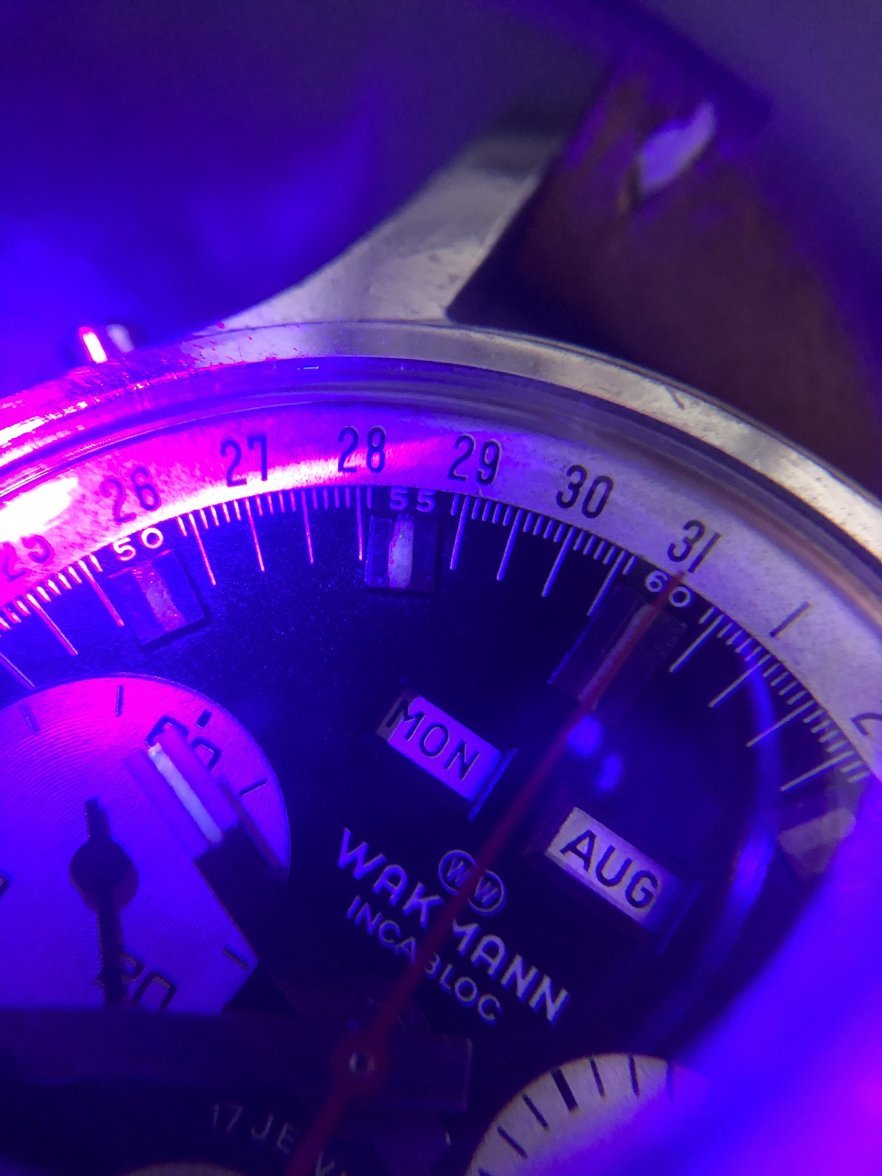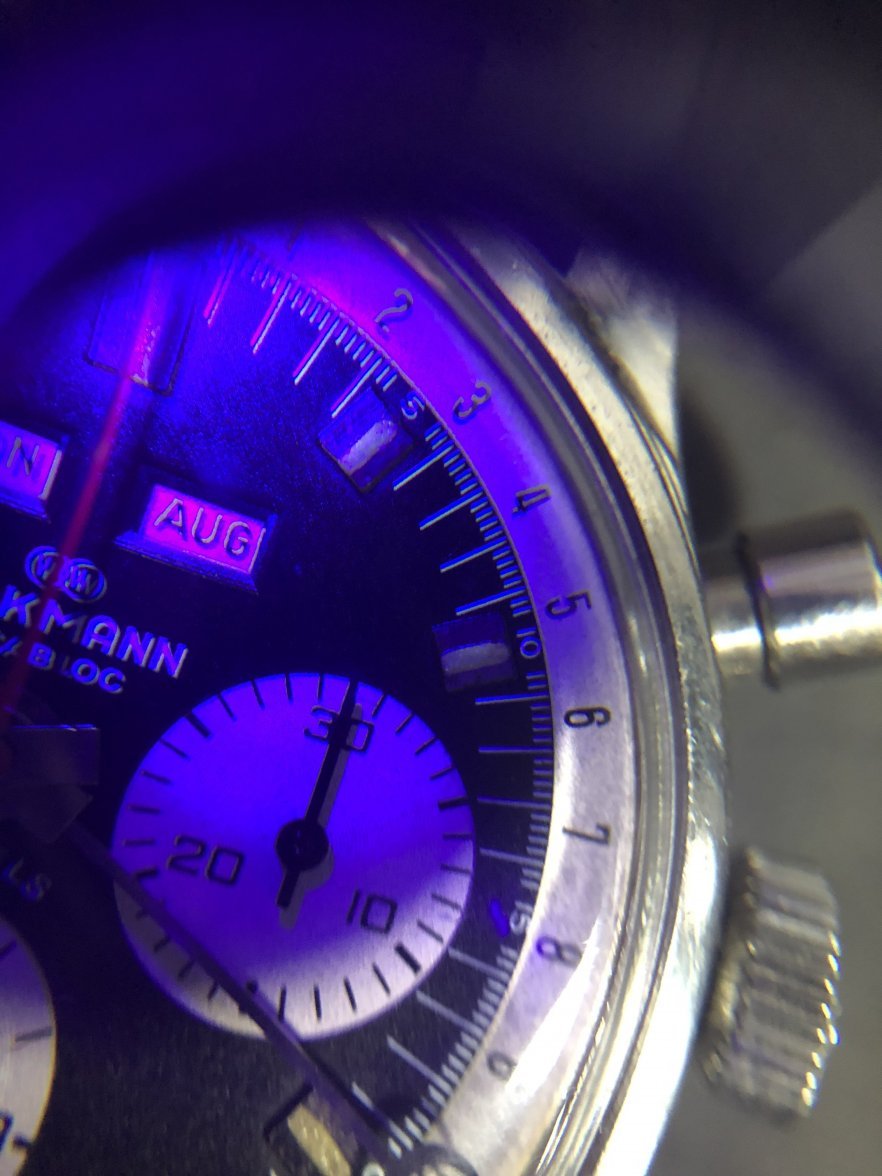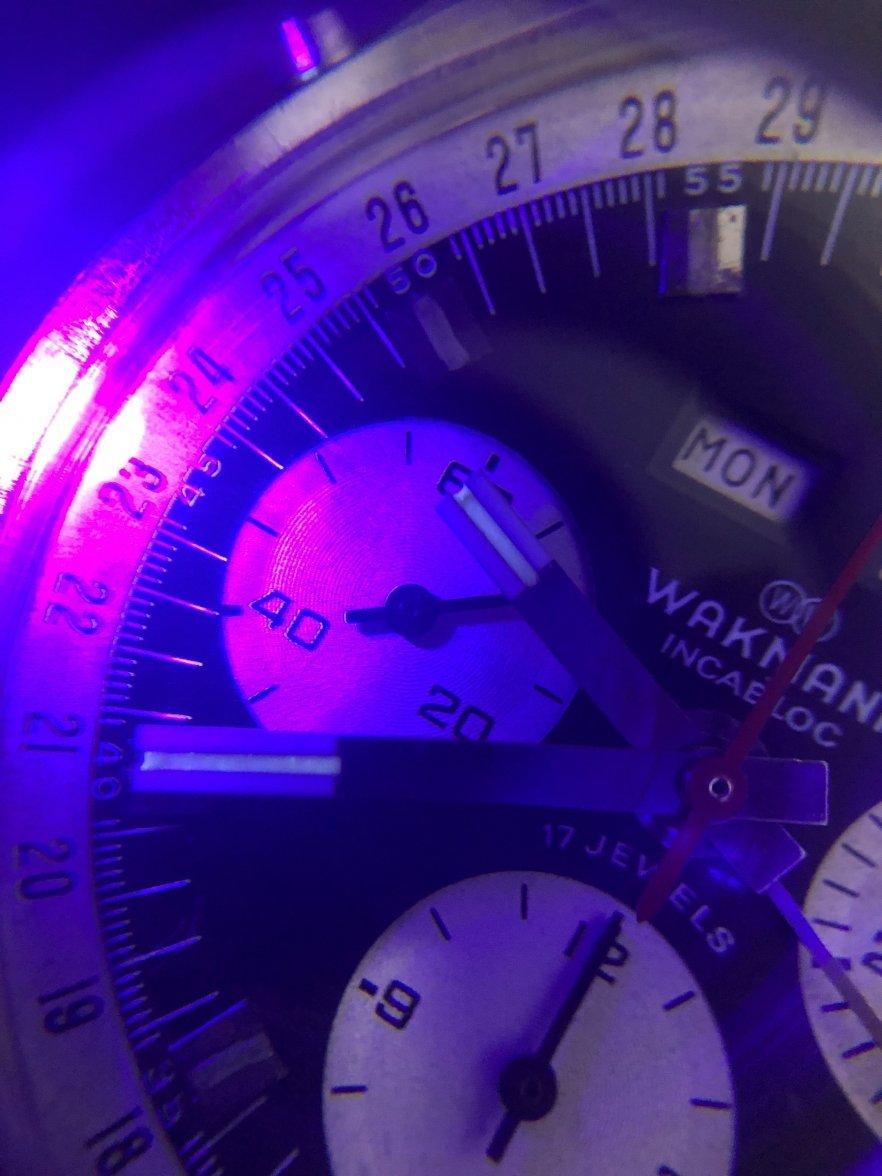There's only one type of tritium; it's just hydrogen with two neutrons (the most common hydrogen isotope has no neutrons, deuterium has one, and tritium has two), the word is from the Greek tritos ‘third.’ because it's the third isotope and/or because it has an atomic weight of about 3 (3.016). So there's no variation in tritium, and because it's chemically identical to hydrogen, you can incorporate tritium into any chemical compound which has hydrogen in it: water, polymers, whatever, or you can keep it as hydrogen gas. Tritium has a half-life of 12.3 years: every 12.3 years, there's a 50/50 chance any particular atom of tritium will spontaneous convert itself into an atom of helium, releasing an electron at the same time. The electron hits a phosphor and excites an electron in that phosphor to a higher energy state; when it collapses back to a stable energy state, it emits a photon of light, with the color of the light depending on the gap between the two states. There are different phosphors in use, including zinc sulfide and strontium aluminate; these molecules are put into a matrix with other elements (the activator) which affect the quantum states available and change the color of light emitted, etc. Then these materials will be made into a paint by mixing them with binders, etc.
While electrons from tritium decay activate the phosphors in the paint in the usual use case, they can also be activated with UV, and because it can take a measurable period of time before the phosphor electrons collapse and emit light, there's an opportunity to see the phosphors glow after they've been exposed to UV.
So the tritium is the same and there's a pretty limited number of the phosphors at the core of the phosphorescence. What does vary is the impurities used with the phosphor to tune the color and persistence of the light, the binders, etc. This is what causes the lifespan and quality of various tritium paints to vary. They will also respond to UV in different ways depending on the wavelength of the UV, etc. I agree with
@Canuck that the failure to glow may be because of the short-wave vs. long-wave illumination difference.
Nothing can be done to change the rate of tritium's decay, it's fundamental physics. The phosphor and paint may degrade at different rates depending on its formulation.
